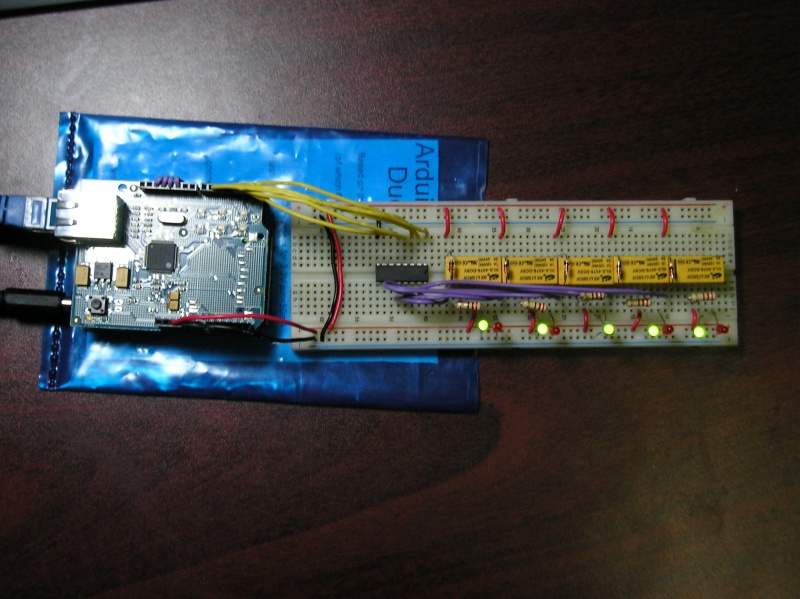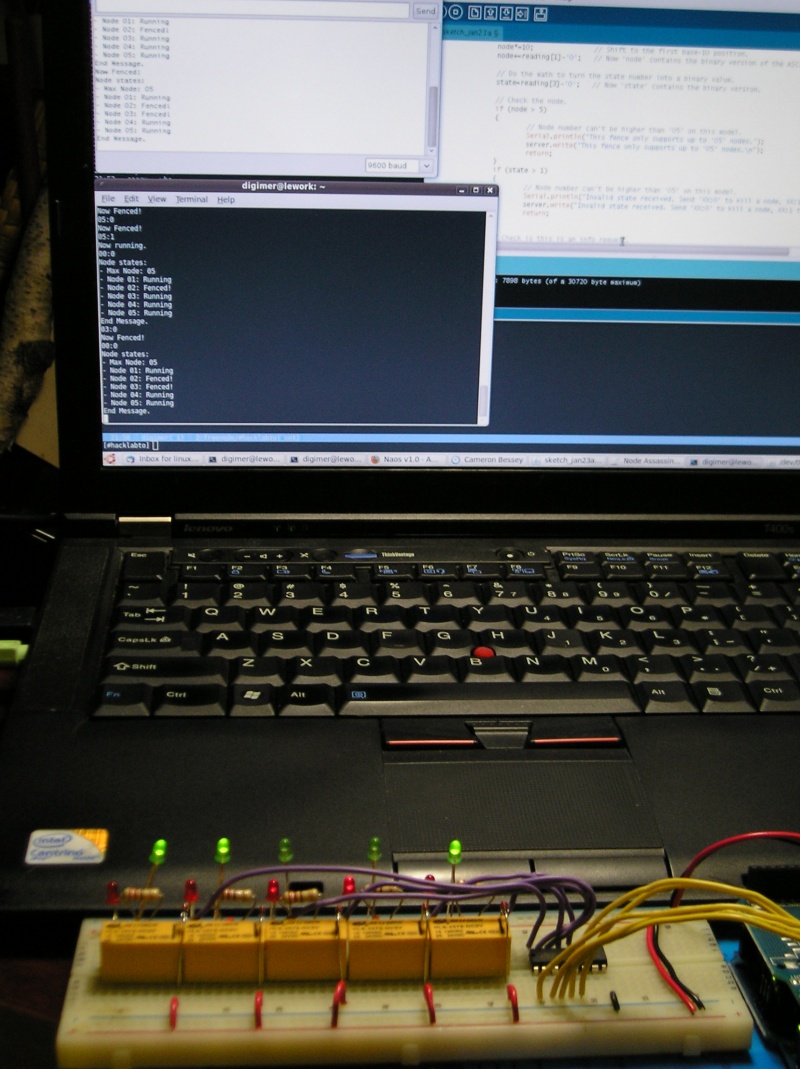Node Assassin - Original: Difference between revisions
No edit summary |
|||
| Line 12: | Line 12: | ||
It still needs to be tied into [[Red Hat]]'s 'ricci' and 'luci' programs to function as a fence device though. This fence device resides on the cluster's private network channel (or some other common intranet). | It still needs to be tied into [[Red Hat]]'s 'ricci' and 'luci' programs to function as a fence device though. This fence device resides on the cluster's private network channel (or some other common intranet). | ||
= Software = | |||
This is the initial release of the fence control software; Node Assassin Operating System. | |||
* [[Naos v1.x]] | |||
== Naos v1.x Protocol == | == Naos v1.x Protocol == | ||
| Line 31: | Line 37: | ||
Once a node is fenced, the caller can release and the state will be held until either another call releases the fence or the Node Assassin is reset. | Once a node is fenced, the caller can release and the state will be held until either another call releases the fence or the Node Assassin is reset. | ||
= Hardware = | = Hardware = | ||
| Line 53: | Line 49: | ||
* The [[1N4148]] diode is used to protect the transistor array and arduino. | * The [[1N4148]] diode is used to protect the transistor array and arduino. | ||
= | == Next Version == | ||
Mark Loit suggested improving the circuit design by swapping out the [[ULN2003A]] and the [[HLS-4078-DC5V]] with something like the [[TLP280-4]] opto-isolators. This will allow for a much reduced power consumption and size allowing for the circuit to potentially exist on an Arduino [[Protoshield]]. | |||
= Pictures = | |||
This will be updated as the build comes along. Once I am done I will post a diagram. No sense sharing my bugs at this point. | This will be updated as the build comes along. Once I am done I will post a diagram. No sense sharing my bugs at this point. | ||
Revision as of 03:48, 24 January 2010
|
Node Assassin :: Node Assassin - Original |
Node Assassin is an open-source, open-hardware project to create a network-attached cluster fence device.
It's really just an idea at this point. At this time, nothing below should be considered valid, functional or likely even sane.
As always, proceed at your own risk. :)
First Version
The first version of Node Assassin is operational!
It still needs to be tied into Red Hat's 'ricci' and 'luci' programs to function as a fence device though. This fence device resides on the cluster's private network channel (or some other common intranet).
Software
This is the initial release of the fence control software; Node Assassin Operating System.
Naos v1.x Protocol
It works by listening for a connection on TCP port 238 on IP 192.168.1.66 (both port and IP are configurable). Once connected, it uses a very simple protocol.
Commands are:
Get the state of all nodes:
00:0
Fence node '02' (Supports nodes from 01 to 05):
02:0
Release '02':
02:1
Fencing or releasing other nodes is a simple as replacing '02' above with the node number. The design allows for the expansion of ports up to 99 devices. It should be trivial to go beyond that, but it's a sufficiently high number for now.
Once a node is fenced, the caller can release and the state will be held until either another call releases the fence or the Node Assassin is reset.
Hardware
This device will be based on the Arduino Duemilanove using the Ethernet Shield for communication.
- The Arduino listens for commands on the network.
- Take "True" or "False" to a given port with a port mapping to a relay to open or close.
- Arduino drives a ULN2003A which in turn drives up to seven relays.
- The relays are He Li Shun's HLS-4078-DC5V.
- I should look into opto-isolators instead...
- The relays are He Li Shun's HLS-4078-DC5V.
- The 1N4148 diode is used to protect the transistor array and arduino.
Next Version
Mark Loit suggested improving the circuit design by swapping out the ULN2003A and the HLS-4078-DC5V with something like the TLP280-4 opto-isolators. This will allow for a much reduced power consumption and size allowing for the circuit to potentially exist on an Arduino Protoshield.
Pictures
This will be updated as the build comes along. Once I am done I will post a diagram. No sense sharing my bugs at this point.


| Input, advice, complaints and meanderings all welcome! | ||||
| Digimer | digimer@alteeve.ca | https://alteeve.ca/w | legal stuff: | |
| All info is provided "As-Is". Do not use anything here unless you are willing and able to take resposibility for your own actions. © 1997-2013 | ||||
| Naming credits go to Christopher Olah! | ||||
| In memory of Kettle, Tonia, Josh, Leah and Harvey. In special memory of Hannah, Jack and Riley. | ||||